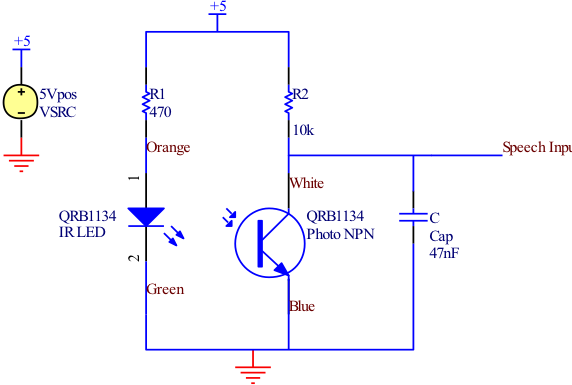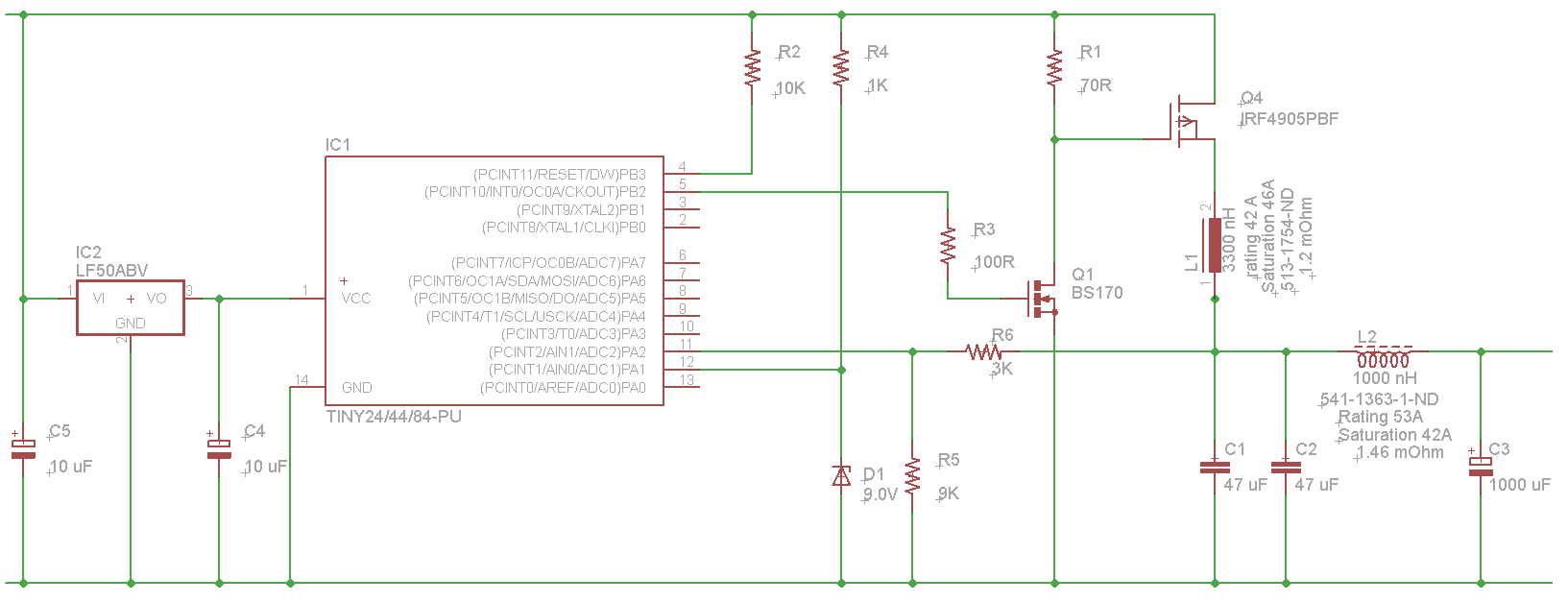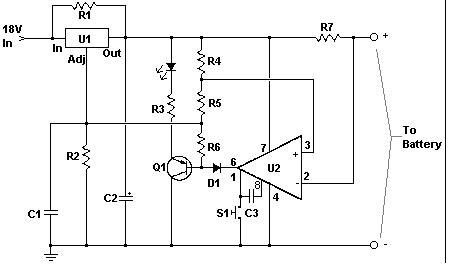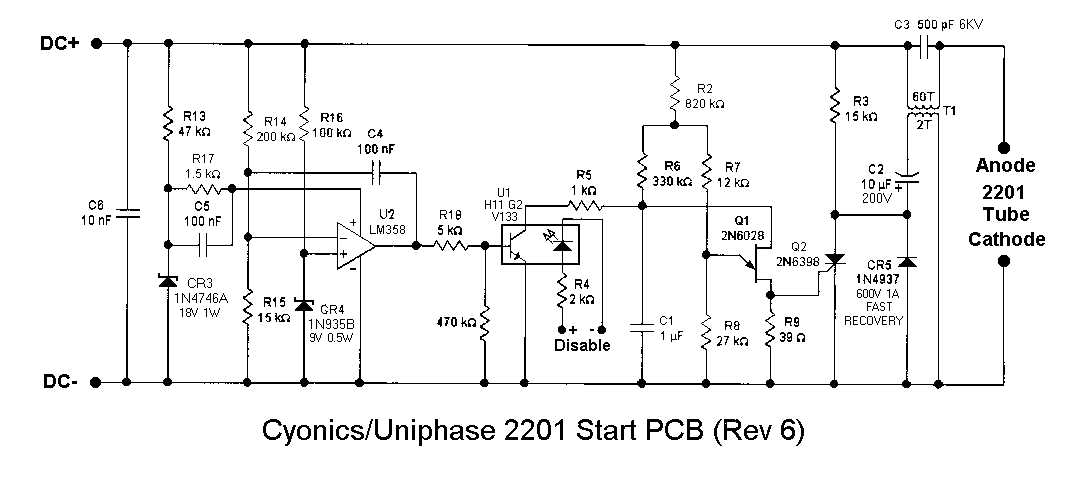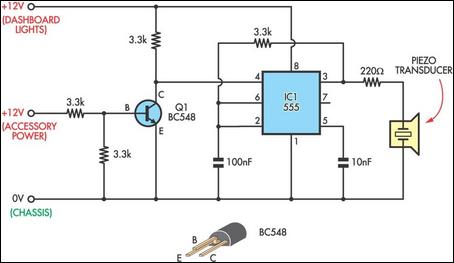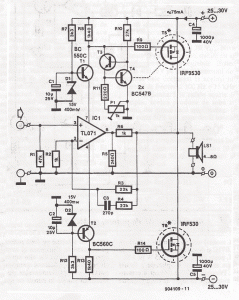
Schematics

AC power is rectified and applied to the motor in one polarity when the momentary switch is held in one direction, and the polarity is reversed when the motor is held in the reverse direction. The remote car starter package utilized includes a control unit, an extended range receiver, a status LED, a valet switch, and four wiring harnesses. In this application, much of this is unnecessary and can be discarded. Only the control unit and extended range receiver are required. The receiver connects to the control unit via a supplied cable. Five connections were made to the control unit: power, ground, unlock, lock, and trunk. The latter three connections are outputs and, in their default configuration, function like momentary switches to ground. For the PLC, an E10-npn model was chosen. The NPN designation refers to the PLC outputs, which are NPN transistors switched to ground. A relay output model is also available but is unsuitable, as the relay outputs are single pole only. At least double pole double throw relays are needed to switch the lift motor polarity, so external relays were used. The radio receiver outputs, which are switches to ground, match the inputs of the E10-npn directly. These were connected accordingly. Additionally, panel switches were wired in parallel to allow both the user and service personnel to operate the lift without the remote. The up and down position limit switches will also be simple switches to ground (these are on hand but not yet installed). Since the PLC inputs are low voltage and low current, safety concerning shorts or exposed wires is not a significant concern. (It should be noted that a short on the limit switches will cause operation to stop, which serves as a good fail-safe mode.) Instead of the original momentary DPDT switch, a pair of relays controlled by the PLC was substituted. Relays with 12V coils were chosen to match the PLC. They are wired as indicated in the diagram. Four-pole relays were used, with an extra set of contacts wired so that only one relay of this pair may be activated at any time. This design minimizes risks associated with potential PLC programming errors. A third relay was added to control canopy lighting. A run/stop switch wired in line with the lift motor allows for a panic stop for safety.
The described circuit operates on a rectified AC power input, which is essential for driving the motor in both forward and reverse directions based on the state of the momentary switch. The inclusion of a control unit and an extended range receiver facilitates remote operation, allowing for user-friendly control over the lift mechanism. The simplified wiring configuration, which includes power, ground, and control outputs for locking and unlocking, ensures that the system remains efficient and easy to manage.
The E10-npn PLC serves as the central control unit, utilizing NPN transistors to manage the output signals. This configuration is particularly suitable for applications requiring low power consumption and minimal current draw. The decision to use external double pole double throw (DPDT) relays is critical for reversing the motor polarity effectively. The relays are designed to handle the necessary load while ensuring that only one relay is activated at a time, thereby preventing potential circuit conflicts or failures.
The integration of panel switches in parallel with the remote control system enhances operational flexibility, allowing for manual control when necessary. Furthermore, the inclusion of limit switches provides an additional layer of safety, ensuring that the lift operation ceases in the event of a malfunction or short circuit, which is a critical consideration in the design of automated systems.
Overall, the circuit design emphasizes safety, reliability, and user convenience, making it well-suited for applications involving motor control in lift systems. The careful selection of components and the thoughtful arrangement of the circuit ensure that it meets operational requirements while minimizing risks associated with electrical faults.AC power is rectified and applied to the motor in the same polarity when the momentary switch is held in one direction and reversed polarity when the motor is held in the reverse direction. The remote car starter package that I used includes a control unit, an extended range receiver, a status LED, a valet switch, and four wiring harnesses.
In thi s application, much of this is not needed and can be discarded. All that is needed is the control unit and extended range receiver. The receiver plugs into the control unit with a supplied cable. I made only 5 connections to the control unit: power, ground, unlock, lock, and trunk. The latter three connections are outputs, and in their default configuration act just like momentary switches to ground. For the PLC, I`ve chosen an E10-npn model. The npn designation refers to the PLC outputs, which are NPN transistors switched to ground. A relay output model is also available, but not suitable, as the relay outputs are single pole only. I need at least double pole double throw relays to switch the lift motor polarity, so I used external relays.
The radio receiver outputs, which are switches to ground, match exactly the inputs of the E10-npn. I connected these directly. I also wired the panel switches in parallel so that I and the service company personnel can operate the lift without the remote. My up and down position limit switches will also be simple switches to ground (I have these on hand but have not yet installed then).
As the PLC inputs are low voltage and low current, safety in the case of a short or exposed wire is not a big concern. (Note that a short on the limit switches will cause operation to stop, which is a good fail safe mode.
) In place of the original momentary DPDT switch, I substituted a pair of relays that are controlled by the PLC. I choose relays with 12v coils to match the PLC. They are wired as the loads are indicated in the diagram. I used 4 pole relays, with an extra set of contacts wired so that only one relay of this pair may be activated at any time.
This keeps the excitement down if I make a PLC programming error. I added a third relay to control canopy lighting. I run/stop switch wired in line with the lift motor allows a panic stop for safety. 🔗 External reference
The described circuit operates on a rectified AC power input, which is essential for driving the motor in both forward and reverse directions based on the state of the momentary switch. The inclusion of a control unit and an extended range receiver facilitates remote operation, allowing for user-friendly control over the lift mechanism. The simplified wiring configuration, which includes power, ground, and control outputs for locking and unlocking, ensures that the system remains efficient and easy to manage.
The E10-npn PLC serves as the central control unit, utilizing NPN transistors to manage the output signals. This configuration is particularly suitable for applications requiring low power consumption and minimal current draw. The decision to use external double pole double throw (DPDT) relays is critical for reversing the motor polarity effectively. The relays are designed to handle the necessary load while ensuring that only one relay is activated at a time, thereby preventing potential circuit conflicts or failures.
The integration of panel switches in parallel with the remote control system enhances operational flexibility, allowing for manual control when necessary. Furthermore, the inclusion of limit switches provides an additional layer of safety, ensuring that the lift operation ceases in the event of a malfunction or short circuit, which is a critical consideration in the design of automated systems.
Overall, the circuit design emphasizes safety, reliability, and user convenience, making it well-suited for applications involving motor control in lift systems. The careful selection of components and the thoughtful arrangement of the circuit ensure that it meets operational requirements while minimizing risks associated with electrical faults.AC power is rectified and applied to the motor in the same polarity when the momentary switch is held in one direction and reversed polarity when the motor is held in the reverse direction. The remote car starter package that I used includes a control unit, an extended range receiver, a status LED, a valet switch, and four wiring harnesses.
In thi s application, much of this is not needed and can be discarded. All that is needed is the control unit and extended range receiver. The receiver plugs into the control unit with a supplied cable. I made only 5 connections to the control unit: power, ground, unlock, lock, and trunk. The latter three connections are outputs, and in their default configuration act just like momentary switches to ground. For the PLC, I`ve chosen an E10-npn model. The npn designation refers to the PLC outputs, which are NPN transistors switched to ground. A relay output model is also available, but not suitable, as the relay outputs are single pole only. I need at least double pole double throw relays to switch the lift motor polarity, so I used external relays.
The radio receiver outputs, which are switches to ground, match exactly the inputs of the E10-npn. I connected these directly. I also wired the panel switches in parallel so that I and the service company personnel can operate the lift without the remote. My up and down position limit switches will also be simple switches to ground (I have these on hand but have not yet installed then).
As the PLC inputs are low voltage and low current, safety in the case of a short or exposed wire is not a big concern. (Note that a short on the limit switches will cause operation to stop, which is a good fail safe mode.
) In place of the original momentary DPDT switch, I substituted a pair of relays that are controlled by the PLC. I choose relays with 12v coils to match the PLC. They are wired as the loads are indicated in the diagram. I used 4 pole relays, with an extra set of contacts wired so that only one relay of this pair may be activated at any time.
This keeps the excitement down if I make a PLC programming error. I added a third relay to control canopy lighting. I run/stop switch wired in line with the lift motor allows a panic stop for safety. 🔗 External reference
